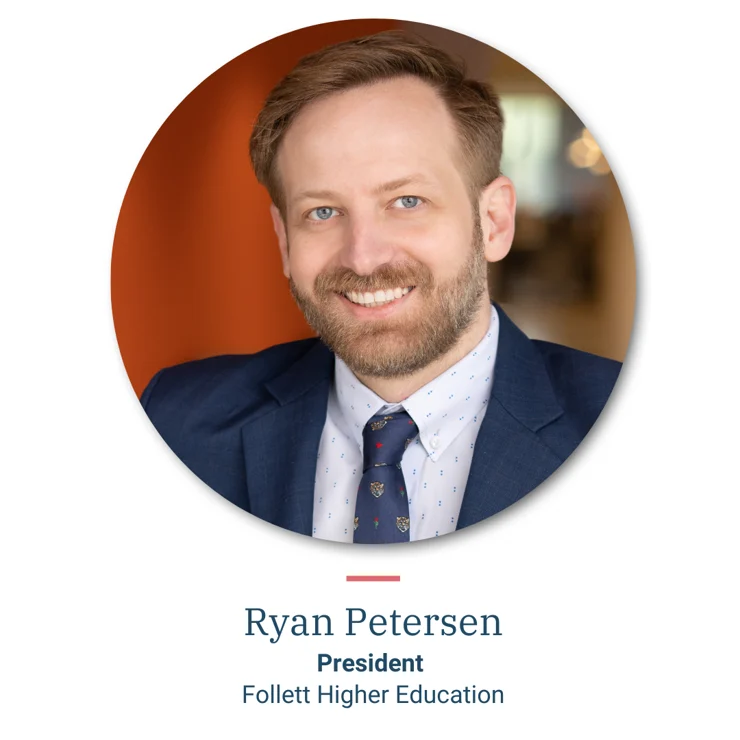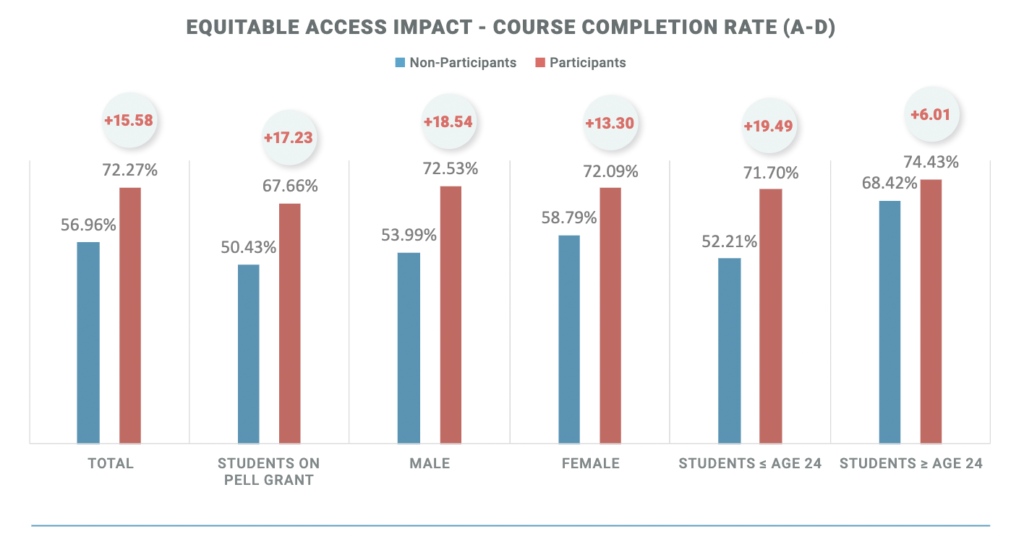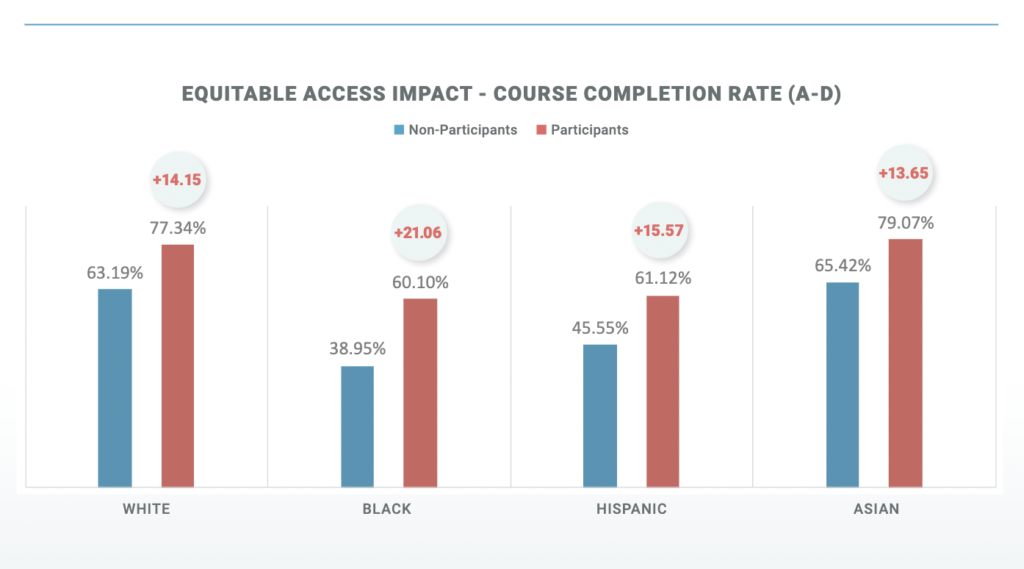
An Interview with Follett President Ryan Petersen and Research Scientist Dr. Mike Moore
How affordable course material programs improve student learning outcomes
Follett Higher Education President Ryan Petersen and Dr. Mike Moore, the academic research scientist known for his work on the impact of Inclusive and Equitable Access, met at the end of 2022 to discuss how Inclusive and Equitable Access programs (IA and EA) are making an impact on course completion rates, persistence, and equity. This interview has been edited for clarity.


RYAN
You and I have walked a similar path in our careers. In 2009, we were both in San Francisco, you at the campus store at University of San Francisco, and me at Verba Software, at the beginning of a journey that led each of us to learn just how important the campus store is to impacting access and affordability. Could you share a little bit about that experience and how it informed the way you approached your research?
MIKE
Working in campus stores gave me a unique perspective to look at how my research is connected to students’ lived experiences. From my time in stores, I’ve had to hold the hand of a mom and dad trying to pay rent, eat, and then also buy course materials [for their children]. What we’re seeing in the research is that if you’re a participant in an Equitable Access program and receive affordable access to course materials on day one, you’re 15.5% more likely to complete the course. That practical application is so important in understanding the impact these models can have.

RYAN
It’s interesting because you’re looking at student learning outcomes and you’re marrying it to course completion, probably the most impactful predictors of students receiving a degree or credential. One of the worst-case scenarios for students is to rack up student debt, but not end up receiving a degree.
MIKE
When we impact course completion rate, it means these models are helping students move toward degree attainment. The faster a student can get to graduation, the less cost that they’re incurring. With Equitable Access, they’re paying less for their textbooks and they’re doing better in class—those two benefits are incredible and really show what these course materials intervention models mean for higher ed.
RYAN
Academic leaders are thinking about recruitment, enrollment, retention, particularly in the face of the demographic cliff. It seems like your research speaks to some of these problems.
MIKE
We know that students who stay in an Equitable Access program are more likely to pass and complete their courses. By helping reduce costs and cutting the time down [to graduation], students can feel that the value [of higher education] is there. With course material interventions – whether it’s IA, EA, or OER – students are going to be less worried about their course materials—and research shows that those concerns contribute to students not taking the major they want, or delaying taking a course. If we can just reduce those barriers and those challenges, I think it’ll open the door for a lot more students.
RYAN
At their best, these programs should be speaking to not only an equal price component, but an equity of opportunity. Can you talk a little bit about the different impacts you’ve seen from equitable access programs on historically underrepresented student populations?
MIKE
I think you’re right that it’s about the cost, but it’s also about access, making sure that every student has access to their course materials. What institutions are saying to underrepresented student populations [with Equitable Access] is that we hear you. We understand the challenges that you’re facing—providing affordable access to course materials is just one of the ways that we can support you.
Looking in a participant versus non-participant model (those that stayed in the program vs. those that opted out), students who identify as two or more races were 22% less likely to complete the course if they opted out of EA—whereas white students who opted out were 14% less likely to complete. We’re still learning why the impact is much greater for those underrepresented student populations—but the research tells us how important these course materials are.

RYAN
Right, it’s benefitting all students. And it happens to have a disproportionate benefit on those students who have suffered disproportionate negative impacts historically.
MIKE
Correct. We’re seeing that Equitable Access models help students learn, support degree attainment, and help students to complete courses. The way I think about it, why would we not provide these models to everyone?